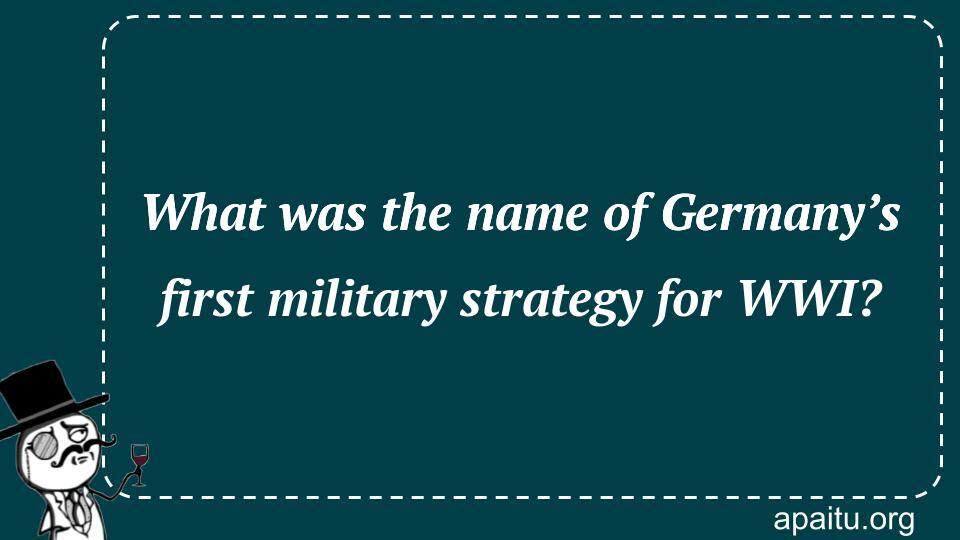Question
Here is the question : WHAT WAS THE NAME OF GERMANY’S FIRST MILITARY STRATEGY FOR WWI?
Option
Here is the option for the question :
- Anaconda Plan
- Schlieffen Plan
- Metternich Plan
- Hindenburg Plan
The Answer:
And, the answer for the the question is :
Explanation:
More than ten years before hostilities began, German general Alfred von Schlieffen devised a plan called the Schlieffen Plan that planned for an immediate military assault by Germany to defeat France, and then a second assault against Russia. It was time sensitive and had few safety nets in place. As France’s strength exceeded expectations, the strategy failed and a terrible stalemate developed on the Western Front.

The Schlieffen Plan was Germany’s first military strategy for World War I, developed by General Count Alfred von Schlieffen in 1905. The plan was designed to allow Germany to quickly defeat France before turning its full attention to Russia, which was expected to take longer to mobilize.
The Schlieffen Plan was based on the assumption that France would be Germany’s main opponent in any future war. The plan called for a massive invasion of France through Belgium, which would allow German forces to encircle and defeat the French army before it could mobilize fully.
The plan also called for a relatively small force to be left behind to defend Germany’s eastern borders against Russia, which was expected to take longer to mobilize and was thus seen as a lesser threat.
The Schlieffen Plan was based on a number of assumptions and estimates, many of which later proved to be incorrect. The plan assumed that the German army would be able to move quickly and effectively through Belgium, despite the country’s neutrality and the potential for resistance from Belgian forces. It also assumed that the French army would not be able to mobilize quickly enough to effectively resist the German invasion.
When World War I broke out in 1914, Germany put the Schlieffen Plan into action. German forces invaded Belgium and quickly advanced into France, but their progress was slowed by stiff French resistance and unexpected logistical challenges. The French army was able to mobilize quickly and put up a stronger resistance than expected.
The SchlieffenPlan also faced unexpected challenges from Britain, which entered the war in support of France. British forces were able to slow the German advance and eventually push them back, effectively ending the German hopes of a quick victory in the west.
the Schlieffen Plan remained an important part of German military strategy throughout World War I. The plan was modified and adapted over time, but its basic principles of a rapid invasion of France through Belgium remained a key part of German military thinking.
The Schlieffen Plan also had a significant impact on the course of the war. The plan’s emphasis on a quick victory in the west, followed by a shift of focus to the east, helped to shape German military strategy and contributed to the country’s eventual defeat. The plan’s failure to achieve a quick victory in France also contributed to the prolonged and devastating nature of the war.
the Schlieffen Plan was Germany’s first military strategy for World War I, developed by General Count Alfred von Schlieffen in 1905. The plan called for a massive invasion of France through Belgium, with the goal of quickly defeating the French army before turning to face Russia. Despite its initial successes, the Schlieffen Plan faced unexpected challenges and ultimately failed to achieve its goals. However, the plan remained an important part of German military strategy throughout th